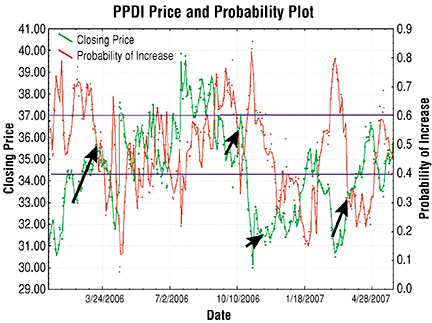NEW TECHNIQUES
Visualizing Stock Behavior Patterns
Discerning Portfolio Patterns
Using Data Animation
Here is a method using animation that helps you visualize patterns of stock behavior for an entire portfolio.
Traders have long used technical indicators and charts to identify patterns characterizing trading opportunities for individual stocks. With the advent of fast computers and easily available historical data, the number of indicators and charts available has greatly expanded. This can become burdensome when tracking a portfolio with many stocks. A dozen stocks with five charts each result in 60 charts to be reviewed and actions evaluated.
A visual treat
Data animation is a method to present stock data for the portfolio as an interactive animation. Standard static charts plot a technical indicator as a function of time in a time series plot. In data animation, time is an implicit variable used to index a sequence of animation frames. Key independent technical indicators are used to define the axes of a three-dimensional plot in each frame. A symbol for each stock in the portfolio is placed in the plot according to the value of its technical indicators at that time.
A portfolio trading policy is the set of rules used to select an action such as buy, sell, short, cover, or watch to be performed with stocks in the portfolio. A policy based on static charts is typically set with empirical pattern recognition methods. These are difficult to implement consistently or algorithmically within a portfolio. Trade actions may be instigated based on different patterns for different stocks. Empirical patterns may be difficult to code in a form sufficiently precise for a computer.

FIGURE 1: STATIC TIME SERIES PLOT OF PROBABILITY SCORE. The right axis, probability of price increase, red line; left axis, closing price, green line; horizontal blue lines buy (upper) and sell (lower) probability thresholds. Arrows show long trades.
When using data animation, we would like to have an automatic method to implement the policy for the portfolio. By using a quantitative method to generate a score for each stock, we can define a policy based on the scores. The trading policy is set by defining trading actions to be taken at different score thresholds.